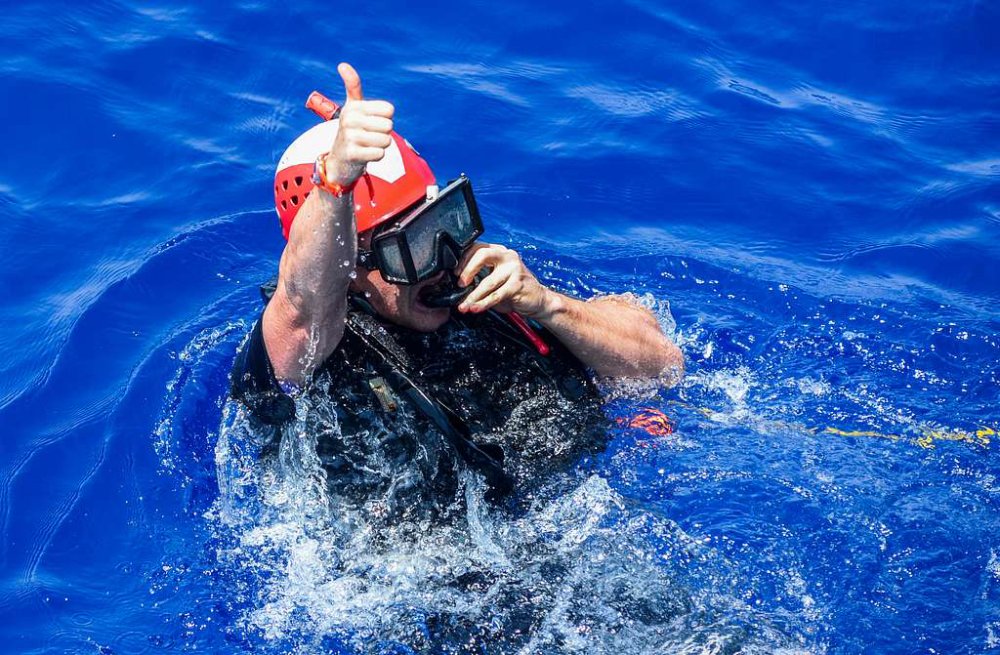Caving is an exciting exploration of the enigmatic world beneath our feet. Even though it may sound thrilling, cave exploration has its own set of difficulties. In cave diving, communication is one of the most important factors. Shouting or using your phone are not effective caving communication signals when you’re deep underground and surrounded by darkness. That’s when the signals that cave in communication become your lifeline.
Envision yourself in a completely dark cave, the only sounds around you being your heartbeat and the sound of dripping water. Your voice is distorted by the reverberating walls as you try to give your friend a straightforward instruction. Not only is it annoying, but it can also be harmful. In caves, poor communication can cause delays, confusion, or even mishaps. But don’t worry—even in the most remote areas of the planet, you can have clear communication with the appropriate signals.
We’ll delve into the topic of cave communication signals in the sections that follow. You will discover their definition, significance, and practical application in maintaining communication with your caving group.
Understanding Caving Communication Signals
Why Are Communication Signals Important in Caves?
Caves are special places where spoken communication may be next to impossible. A simple shout can become indistinguishable due to the echoing walls, underground streams, and sheer distance between caverns. For this reason, bending communication signals are very important. Through the use of these signals—visual, auditory, or tactile—cavers can communicate ideas clearly and promptly.
Deep underground, communication becomes more important for survival than for mere conversation. Everyone in the group will be aware of what is happening, where to go, and what to do next if there is clear communication. It’s a means of avoiding dangers, maintaining direction, and guaranteeing everyone returns safely.
Types of Caving Communication Signals
The three primary categories of caving communication signals are visual, auditory, and tactile signals. Depending on the circumstances and cave environment, each type has advantages.
1. Visual Signals
When there’s enough light to see, visual signals are frequently the first option used. Usually, they entail the use of lights or hand signals. A caver might, for instance, flash their headlamps in a particular pattern to indicate “Stop” or “Come here.” Additionally, hand signals are frequently used, particularly in the cave’s well-lit areas.
- Example of a visual signal: Three short flashes of a headlamp might mean “Danger,” while a continuous wave could signal “Come closer.”
2. Auditory Signals
Auditory signals become critical when visibility is poor or when cavers are separated by a significant distance. These signals use particular noises to transmit messages. Because their sound can travel a long way in a cave, whistles are a common tool for this kind of work. Whistle blasts can convey various messages depending on how many they sound.
- Example of an auditory signal: One whistle blast could mean “Attention,” two blasts might mean “Move forward,” and three blasts could mean “Retreat.”
3. Tactile Signals
Tactile signals are useful in situations where sound cannot travel far or in total darkness. These signals entail making contact with another caveman by tapping or touching them. A tap on the shoulder, for example, could indicate “Follow me,” but an arm squeeze could indicate “Stop.”
- Example of a tactile signal: A series of shoulder taps might indicate the number of people who need to pass a tight spot.
Step-by-Step Guide to Effective Caving Communication
Step 1: Plan Your Signals Before You Enter
It’s important to discuss and decide on the communication signals with your group before you enter the cave. Verify that everyone understands the meaning of each signal, and practice them if needed. This planning will avoid confusion underground and save time.
Step 2: Stick to the Agreed Signals
When it comes to caving communication, consistency is essential. Adhere to the signals you have discussed; do not invent new ones at the moment. This guarantees that, even under pressure, everyone in the group understands everyone else.
Step 3: Keep It Simple
Make use of signals that are straightforward, easy to remember, and simple to use. Mistakes can arise from overcomplicating your communication, particularly when you’re stressed or exhausted. Remain focused on a small number of key signals that address the majority of scenarios.
Step 4: Practice Regularly
Like any other skill, communication signal climbing requires practice. Before your caving trip, spend some time practicing the signals with your group. By doing this, you can make sure that everyone is on the same page and that you can respond quickly and appropriately when needed.
Step 5: Stay Alert and Communicate Often
Things can change very quickly in a cave. Remain aware of your surroundings and engage in regular communication with your group. Use your signals to alert the group if you see something strange or feel threatened.
You Might Like to Know
What are the communication techniques for caving?
To communicate in the difficult setting of a cave, caving communication techniques combine tactile, visual, and auditory cues. Common tactics include physical taps, whistle blasts, and headlamp flashes. In situations where verbal communication is not possible, these techniques guarantee that cavers can maintain connections.
How do people communicate in caves?
To overcome the particular difficulties of the underground environment, people in caves communicate with one another using specialized signals. When visibility is good, visual signals like hand gestures and light flashes are used. Whistles and other auditory cues are useful when cavers are far apart. In total darkness or confined spaces, tactile cues are employed, such as taps on the shoulder.
What are the types of communication signals?
Visual, aural, and tactile signals are the three primary forms of communication signals used in caves. Light patterns and hand gestures are examples of visual signals. Whistles and voice calls are examples of auditory signals. When other means of communication are not feasible, tactile signals use touch to transmit messages.

What are the 5 basic signal communications?
The five basic signal communications commonly used in caving are:
- One whistle blast: Attention.
- Two whistle blasts: Move forward.
- Three whistle blasts: Retreat.
- Flashing light three times: Danger.
- Shoulder tap: Follow me.
What are 10 examples of signal words?
Signal words are specific words or sounds used to convey messages quickly. Here are ten examples:
- Attention
- Stop
- Go
- Danger
- Help
- Clear
- Follow
- Wait
- Slow
- Careful
Conclusion
Caving communication signals are more than just a way to talk; they’re a crucial part of staying safe underground. By mastering these signals, you ensure that you and your team can navigate the challenges of caving with confidence and clarity. Whether you’re using a headlamp, a whistle, or a simple tap on the shoulder, these signals will keep you connected, even in the darkest depths of the earth. Remember, clear communication is your lifeline in the cave—so keep those signals sharp and stay safe!
Find out about Cave Diving Signals.
